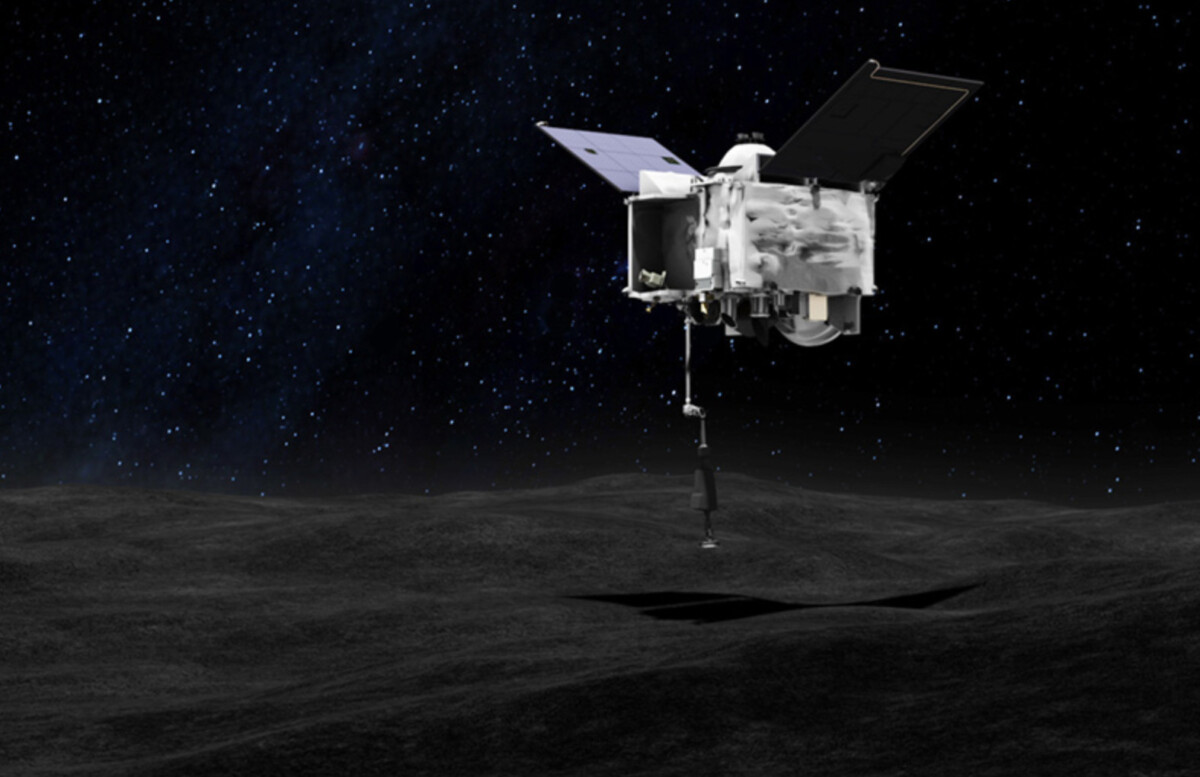Worryingly, some of the collected material leaks into space.
Last week, the US space probe OSIRIS-REx traveled to the surface of asteroid Bennu. The goal was to suck up some soil material from the distant asteroid so that once it is back on Earth it can be thoroughly investigated. Although it soon became clear the mission had gone well, it remained exciting or there sufficient material has been collected. And now the word is out.
Enough material
The researchers wanted to determine with 90 percent certainty that 60 grams or more of material had been collected. And images now show that OSIRIS-REx has absorbed more than enough material during the descent. The spacecraft manufactured photographs of the round head located at the end of the sampling arm – the Touch-And-Go Sample Acquisition Mechanism (TAGSAM) – located. When the researchers looked at these images, they noticed that it appeared to be full of tiny asteroid pieces.
Assembly point
OSIRIS-REx collected the material from the Nightingale crater, a 140-meter wide crater located in the northern hemisphere of Bennu. Why was this place chosen? One of the main objectives of spacecraft OSIRIS-REx after arriving at Bennu was to map the surface and find a suitable place to sample that surface. This resulted in four possible locations for sampling. All four locations have two things in common: As far as NASA could see, beautiful samples could be collected without causing too great a risk to OSIRIS-REx during its descent to the surface and sampling. All four sites were then extensively investigated to select the most suitable landing site. And in the end, Nightingale Crater emerged as the winner. According to NASA, this is where the largest amount of fine-grained (and therefore easy to collect) material can be found. Moreover, that material is fairly easily accessible for OSIRIS-REx and the probe runs few risks during sampling. Of the four candidates, Nightingale best meets the set criteria and the chance of success is ultimately greatest here.
The sampling took place under optimal conditions, the team concludes. Newly available analyzes show that the round head of the sampling arm was exactly flush with Bennu’s surface when OSIRIS-REx landed on the asteroid and fired the bottle of nitrogen gas. In addition, it now appears that the US probe penetrated several centimeters deep into the soil. All data together indicate that at least 200 grams of regolith was collected during the sampling. And that is very good news!
To care
At the same time, the team is a little concerned. The same images show that small pieces of material also escape from the round head. It means that OSIRIS-REx is losing valuable material from Bennu. The researchers suspect that larger stones are stuck between the lid, preventing it from closing properly. As a result, smaller pieces of rock find their way out again and leak into space.
This gif – made with the SamCam from OSIRIS-REx – shows that the monster’s head is full of stones and dust. At the same time, the image shows that pieces of grit are also escaping from the monster’s head. Image: NASA
–
Storage
According to the researchers, every movement of OSIRIS-REx can cause more collected material to slip away. To minimize this, the team decided to cancel subsequent maneuvers to meticulously map the amount of material collected. Because the researchers assume that the American probe has collected enough material, they now want to act quickly. For example, the monster must be quickly stored in the spacecraft. “My job is to safely return as large a sample of Bennu as possible to Earth,” said study leader Dante Lauretta. “The loss of material worries me. I strongly encourage the team to get rid of this precious monster as soon as possible. ”
Next step
From now on, the team will focus on the next step: storing the precious material in the so-called Sample Return Capsule (SRC). Here, the loose material is safely stored during the spacecraft’s long journey back to Earth.
The researchers are cautiously optimistic. “Bennu continues to surprise us with great science, but also with some unexpected setbacks,” said Thomas Zurbuchen of NASA. “And although we will probably have to put the sample away a bit faster now, that’s not a very annoying problem. We are very pleased to see that we have collected a lot of material that will continue to inspire science for decades after this historic moment. ”
–
Keep amazed ✨
Receive the most beautiful space photos and interesting popular science articles every Friday. Get the free Scientias Magazine together with 50,000 others.


